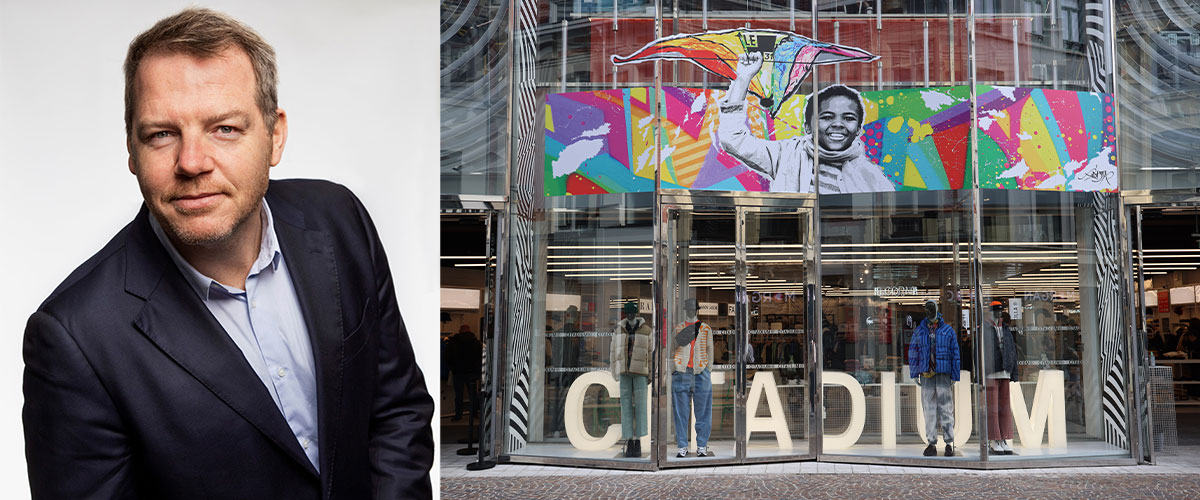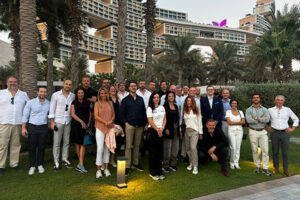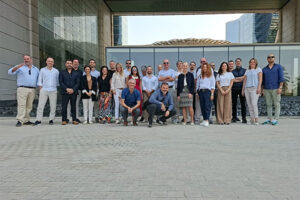I knew we had hit the right note with our redevelopment of the former Galerie Lafayette store on Rue de Béthune in Lille, when I received the reports from our new tenants with their turnover numbers had matched, or even exceeded, their forecasts since the opening of “Le 31” in October 2021. However, an even better testament of its attraction came from my very own family just a month ago, when my son told me he wanted to celebrate his 10th birthday at one of the escape rooms at the center. That was a really big – and, naturally, a very pleasant surprise.
Therefore, I can say, based on my own personal experience, that a well-designed retail offering that combines a mix of uses including high-quality retail stores, food and beverage, leisure activities, a hotel, and flexible workspace appeals to a wide range of consumers – from young kids to old men like me. Le 31 perfectly illustrates that urban centers are not exclusively the domain of younger generations, or of men and women enjoying their retirement, it has helped breathe new life into a central retail district and has turned it into a buzzing and dynamic location for people of all ages.
When I first saw the former Galerie Lafayette department store, it had only been open for less than 10 years, but I could see that something was not working. The street on which the store was located was not a destination in itself, just a passage that people walked through to get somewhere else. I asked our transaction team to check out who the owner was, and when we discovered it was a Munich-based German bank, we presented them our vision to rejuvenate the location. By late 2016, we had agreed on a deal for the 25,000 sq m of retail space.
Halving the Retail Space
A key element of the plan that we came up with was to more than halve the retail space to 10,000 sq m on the ground-level and first-level floors. Our concept involved splitting the facade on Rue de Bethune into three distinct sections for retail and F&B. That left us with the challenge of finding a new purpose for the upper floors and the rear of the building. After consultations with a number of different architects and developers, we opted for a combination of uses, including retail, F&B, leisure, a hotel, a parking garage, and offices.
The current tenants include streetwear fashion brand Citadium, sports equipment retailer Decathlon, street food startup Grand Scène, climbing center Climb Up, gym operator Fitness Park, escape room manager Team Break, Okko Hotel, and flexible workspace operator Wojo.
Decision against Residential
We deliberately did not include residential in the mix, which was an obvious choice for us in that instance. When we bought the 25,000-square-meter retail property, we were very much aware that it had strengths and weaknesses. The retail function was not connecting with the street and was also not clearly represented on the main facade. It was evident to us that if we were to harness the power of retail at that location, we would need to maintain the full breadth and depth of the 45-meter facade. Of the five projects that were submitted, four comprised a residential element, but we decided to go for the design that incorporated a hotel instead.
That is not to say we do not believe in residential as a key component of a mixed-use area. On the contrary, residential has a very important role to play in many urban locations, but in this particular case, we believe that residential would have detracted the mix. To include living, we would have had to create more windows and balconies on the upper floor, which would have had quite an impact on the facade and existing architecture. The ground and first-level floors of Le 31 are now still primarily devoted to retail in the current configuration, and that is also clearly visible on the main facade.
In that regard, our retail redevelopment in Lille is very different to most of the other regeneration projects we have worked on. We have already successfully used residential in Bordeaux, where we transformed the former print works of Sud Ouest newspaper into the new Promenade Sainte-Catherine shopping location. The 28,000-square-meter complex offers 100 apartments as well as 19,000 sq m of retail space in the heart of the historic city center.
Key Lessons Learned from Le 31
Like our project in Bordeaux, Le 31 in Lille has taught us a number of important lessons that we will deploy on other redevelopments. One of the key things we have learned is that good storytelling is vital in order to engage the authorities and potential tenants. If you can show, rather than tell, how different users, such as a hotel, coworkers, or a leisure operator can benefit from a mix of functions, it is relatively easy to onboard brands with good profiles.
The first and most crucial step is to get the local authorities on board from the start. Some local governments have a reputation for not always being sufficiently cooperative, but in our experience, it really depends on your approach. The main point we try to get across is that Redevco has something to offer to them. Our purpose is not to impose our will, but to form an alliance. It is vital to ensure from the outset that all partners are perfectly aligned to create something that is ideally integrated into its environment and meets local demands. That becomes a lot easier when you yourself have a clear vision and know when, and how, you aim to execute a project.
That, of course, can be a time-consuming exercise, but it can also bring a lot of positive things to the project. Government authorities differ enormously, and their receptiveness to an idea generally depends on the size and capacity of the city itself and its own strategy. However, if the onboarding is done well, time will be saved later on and the project will become a long-term success, which is an integral part of the city’s evolution. From our point of view, any time spent with the city officials is time well spent. At Redevco, we do not do a project just to shine at the opening; our goal is to create something that will last for the next 30 to 50 years, that has a positive impact on the area, and that ultimately helps make the city more sustainable and livable.
Creating a Community Ecosystem
In the end, what we aim to do is to create an ecosystem in which all players – tenants, employees, and users – have a sense of community. One way in which we achieved that in Lille was by working together with Citadium, our anchor tenant at Le 31. We had the choice of signing two other well-known retailers as occupiers, but we put the question to them as to who they would prefer. They chose Decathlon as they felt that particular brand would complement their own offering.
Our cooperation with potential tenants turned out to be a real boon. Retailers, F&B operators, and leisure specialists were hit hard by the COVID-19 pandemic, but we have managed to sign leases for Le 31 during this period despite the difficulties they have faced. Nor did we experience any other major issues with other stakeholders. That is, in our opinion, down to the fact that we understand retail thanks to our roots in the C&A business as well as our extensive internal and external research that maps the impact of the megatrends that are shaping the future of our cities and real estate.
Store-as-a-Service
As an urban specialist with a long track record in retail, we are also able to offer tailor-made solutions. A case in point is Store-as-a-Service, or SaaS, a new kind of (retail) space leasing concept that we have developed in response to the changing retail landscape and the emergence of new types of demand for space. SaaS builds on the premise that potential tenants of (retail) spaces are held back by the long-term commitments and high investments that are often required to lease spaces. The idea is that companies, experience providers, and advertisers are looking for flexible and easy ways to interact with consumers in the physical space in order to showcase and test products and ultimately create brand value.
SaaS serves these needs by offering short-lease spaces at premium locations all over Europe, where brands can create immersive, interactive and direct experiences for their customers. Those spaces are equipped with the basic installations, such as floors, walls, lighting grids, and IT infrastructure.
Solutions such as SaaS, our City Attractiveness research, and the invaluable lessons we have learned with projects such as Le 31 in Lille and Promenade Sainte-Catherine in Bordeaux stand us in good stead for new redevelopments that we are working on across Europe. In total, we have around 20 projects in the pipeline. They vary in terms of type and size, but all are unified by our goal to create new ecosystems of working, living, learning, and having fun – places in which everybody, from a 10-year-old youngster to an old man like me, can feel at home.
About the author:
Thierry Cahierre is Managing Director of Redevco France






